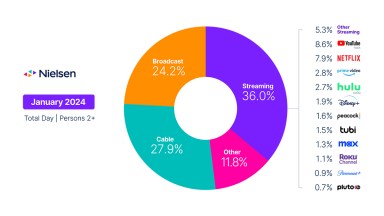
Over the past few years—and especially in 2020—marketers have had to be increasingly flexible and agile to meet ever-changing consumer demands. In this year’s Nielsen 2021 Annual Marketing Report, we found that marketers across several industries, including technology, travel and tourism, retail and financial services, had to adjust the mix of their marketing spend by as much as 59% in 2020 to adapt to the pandemic. As consumer preferences changed, it created a domino effect that affected business priorities and budgets. To keep pace, marketers had to be creative to activate campaigns with less.
The pandemic has taught marketers to prepare for the next uncertainty. To create engaging experiences for customers while garnering positive business results, marketers must continue to adapt and stay on their toes. Here are three ways how.
Make swift changes to marketing campaigns with reliable measurement tools
Marketing analytics and attribution measurement tools that give marketers insight into shifting consumer preferences in real time are of equal importance to resources like budget. With tools like cross-channel measurement and identity resolution, marketers can alter their campaigns before consumer preferences change. In the current landscape, marketers may find that manually monitoring changing customer preferences is overwhelming, if not impossible. With third party cookies being phased out in the coming year and the erosion of data, legacy marketing-technology stacks won’t be as useful, and it will be crucial for marketers to gain visibility into engagements on the individual level.
One challenge that marketers across industries face is not having the necessary insight to understand where changes need to be made. Nielsen’s 2021 Annual Marketing Report found that marketing measurement remains a universal roadblock. Brands of all sizes and industries held little confidence in their measurement capabilities. Even for large companies ($10 million+ in revenue), only 20% felt that they were equipped with the right tools to measure the ROI of their campaigns. Without the correct insights, many campaigns may be underperforming without marketers noticing. And even if marketers are lucky enough to recognize that their campaigns aren’t performing as well as they should be, they usually don’t have the transparency into which components are hindering the campaigns’ success. Therefore, marketers may choose to eliminate the whole strategy versus making cost-effective, specific changes.
Modern technology that shows granular insights into how consumers are reacting to campaigns across social media platforms and devices empowers marketers to modify their strategies swiftly and securely on the right channels.
Invest in multiple channels to drive conversions
Traditionally, omnichannel strategies were developed to ensure the customer buying process was smooth across online and brick-and-mortar experiences. Now, in an age where the customer journey may be more fragmented, marketers must place equal emphasis on each individual touchpoint rather than only on the point of purchase. To be successful, marketers must also invest in multiple channels to reach customers across every step of the funnel so that they achieve both quick wins for the business while developing their upper-funnel, brand-building efforts.
Nielsen found that customer acquisition is the top objective for all the marketers surveyed (42% for medium-sized companies and 41% for large-sized companies, respectively), but most marketers plan to increase their spend on social media (75%), search (73%), and video (65%). As a result, this could miss a swath of prospects who aren’t engaging with a brand on those channels. To ensure marketers are engaging with important consumers and prospects, they can leverage identity resolution and cross-channel measurement tactics to establish and monitor KPIs for customer acquisitions, conversions, or other important metrics to understand what is successful or what channel may need attention.
Run campaigns and use measurement tools, no matter the budget
Budget is typically the primary roadblock to adopting marketing analytics and attribution solutions—Nielsen’s report found that companies with small budgets (less than $1 million) reported that budget limitations inhibited their ability to access marketing technology solutions last year.
Furthermore, when business uncertainty persists, marketing tends to be one of the first departments to lose budget. However, Nielsen’s database of long-term effect models reveals that brands that stopped advertising in the second half of 2020 could face revenue declines of up to 11% through the rest of this year. Reining in marketing efforts can hurt businesses in the short- and long-term.
Instead of halting campaigns altogether, marketers should work to stay engaged with existing consumers. Future-forward measurement tools will be important in making this goal a reality. In recent years, the marketing technology industry has adapted by broadening the range of products and pricing models, so that even small companies can take advantage of marketing analytics tools, such as identity resolution and cross-channel measurement. These pricing models can be beneficial for any sized company, but particularly for those with smaller budgets looking to adopt these solutions to better inform their campaigns and marketing efforts. As marketers face increased pressure to perform, these systems can help marketers—even those with small budgets—allocate their budgets wisely while showing their results to business executives.
Today’s multi-touch landscape provides an opportunity for marketers to engage with and create positive impacts for their customers. As the world works to navigate the new normal and mitigate current disruptions, marketers can truly showcase why marketing is crucial. With the right measurement tools and forward-thinking approaches, marketers can attract and retain current customers and prospects while validating their efforts.
This article originally appeared on Martech Series.




